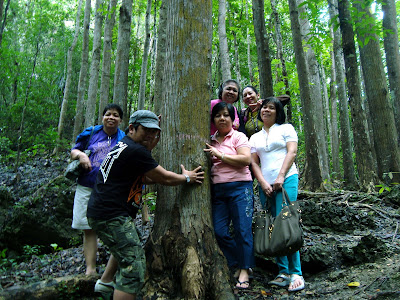1.
A
COLONY of ants (photo)
2.
An
ARMY of ants
3.
A
STATE or SWARM of ants
4.
A
HERD of asses
5.
A
DROVE of asses.
6.
A
TROOP of baboons
7.
A
CONGRESS of baboons
8.
A
COLONY of bacteria
9.
A
CULTURE of bacteria
10.
A
BATTERY of barracudas
11.
(A
BATTERY of lawyers)
 12.
A
SHOAL of bass
12.
A
SHOAL of bass
13.
A
COLONY of bats
14.
A
CLOUD of bats
15.
A
SLOTH or SLEUTH of bears
16.
A
COLONY of beavers
17.
A
FAMILY of beavers
18.
A
GRIST, HIVE, SWARM of bees
19.
A
CLUSTER or NEST of bees
20.
A
FLOCK or FLIGHT of birds (photo)
21.
A
POD of birds (small flock)
 22.
A
VOLARY of birds (in an aviary)
22.
A
VOLARY of birds (in an aviary)
23.
A
BRACE (a pair of game birds or waterfowls)
24.
A
DROVE of bullocks
25.
A
KALEIDOSCOPE of butterflies
26.
A
FLUTTER of butterflies (photo)
27.
A
RAINBOW of butterflies
28.
A
CARAVAN, FLOCK or TRAIN of camels
29.
An
ARMY of caterpillars
30.
A
HERD, DROVE or DRIFT of cattle.
31.
A
MOB of cattle (US and Australia)
32.
A
POUNCE of cats
33.
A
KINDLE, LITTER OR INTRIGUE (for kittens)
34.
A
BROOD, FLOCK, RUN or PEEP of chicken
35.
A
CLUTCH OR CHATTERING of chicks
36.
A
HERD of cows
37.
A
KINE of cows (12 cows are a FLINK)
38.
A
PACK of coyotes
39.
A
TRAIN of coyotes
40.
A
BAND of coyotes
41.
A
ROUT of coyotes
42.
A
HERD, SEIGE or SEDGE* of cranes
43.
A
CAST of crabs
44.
A
CONGREGATION or NEST of crocodiles
45.
A
BASK or FLOAT of crocodiles.
46.
A
HOVER, MUSTER, or PARCEL of crows.
47.
A
MURDER of crows
48.
A
HORDE of crows 
49.
A
PARLIAMENT of owls
(photo)
50.
A
LITTER of cubs
51.
A
TROOP of dogfish
52.
A
PACK (wild dogs) or KENNEL of dogs
53.
A
LITTER of puppies
54.
A
FLIGHT or DOLE of doves
55.
A
TEAM, FLIGHT or FLOCK* of wild ducks in flight
56.
A
CONVOCATION of eagles
57.
A
CONGREGATION of eagles
58.
An
ARRAY of eels
59.
A
HERD or PARADE of elephants
60.
A
CRASH of elephants
61.
A
HERD of elks
62.
A
GANG of elks
63.
A
CHARM of finches
64.
A
SHOAL, DRAFT, NEST, SCHOOL of fish.
65.
A
RUN of fish in motion
66.
A
STAND of flamingoes
67.
A
FLAMBOYANCE of flamingoes
68.
A
CLOUD, HATCH or SWARM of flies
69.
A
SKULK of foxes
70.
A
CLOUD, TROOP or COMPANY of foxes
71.
A
GAGGLE or FLOCK of geese
72.
A
SKEIN, TEAM or WEDGE of geese (in the air)
73.
A
PLUMP of geese (on water)
74.
A
CLOUD OR HORDE of gnats
75.
A
FLOCK, HERD or TRIBE of goats
76.
A
TRIP of goats
 77.
A
CLOUD of grasshoppers
77.
A
CLOUD of grasshoppers
78.
A
SWARM of locusts (photo)
79.
A
NEST of hornets
80.
A
SCATTERING, SEIGE or SEDGE* of herons
81.
A
CHARM of hummingbirds
82.
A
BEVY of larks
83.
An
EXALTATION of larks
84.
An
ASCENSION of larks
85.
A
PARTY or SCOLD of jays
86.
A
TROOP of lemurs
87.
A
SCOURGE of mosquitoes
88.
A
PACK or SPAN of mules
89.
A
WATCH of nightingales
90.
An
ENCHANTMENT of nightingales
91.
A
TEAM or YOKE of oxen
92.
A
DROVE or HERD of oxen
93.
A
BED of oysters
94.
A
SQUADRON of pelicans
95.
A
FLOCK or FLIGHT of pigeons
96.
A
DROVE OR STRING of ponies.
97.
A
NURSERY of raccoons
98.
A
MURDER of ravens
99.
A
CONSPIRACY of ravens
100. A
HERD, HAREM, TRIP or ROOKERY* of seals
101. A
DEN, BED, PIT or SLITHER of snakes.
102. A
NEST or KNOT of snakes
103. A
HOST of sparrows
104. A
FLIGHT of swallows
105. A
BALLET of swans
106. An
AMBUSH or STREAK* of tigers
107. A
COMMITTEE of vultures
108. A
SCHOOL of whales
109. A
HERD of whales
110. A
ZEAL, HERD or DAZZLE of zebras
 3. Children who grow up with a cat in the house are less likely to develop allergies or asthma.
3. Children who grow up with a cat in the house are less likely to develop allergies or asthma. 









